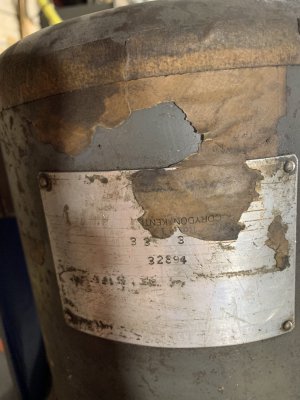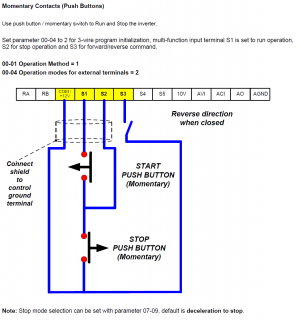- Joined
- Mar 27, 2022
- Messages
- 425
I recently acquired a bp clone and the motor plate has been scrubbed pretty hard. I dont know what the stamped numbers are for, maybe rebuild stuff? I removed the paper and was able to find it is classified as 2 hp 3 phase. Looks like 230V is 5.8 amps and 460V is 2.9 amps? Does that sound right?
The 230 and 460 wiring has been removed. I took off the cover and found the wires labeled XYZ together, Black wire goes to U and UU wires, White goes to V and VV wires, and Red goes to W and WW wires. Is this enough information to find out if it is wired for 230V?
I am going single phase 230, what size VFD do I need? Are their HP ratings assuming 3ph in to the VFD or single phase?

The 230 and 460 wiring has been removed. I took off the cover and found the wires labeled XYZ together, Black wire goes to U and UU wires, White goes to V and VV wires, and Red goes to W and WW wires. Is this enough information to find out if it is wired for 230V?
I am going single phase 230, what size VFD do I need? Are their HP ratings assuming 3ph in to the VFD or single phase?



